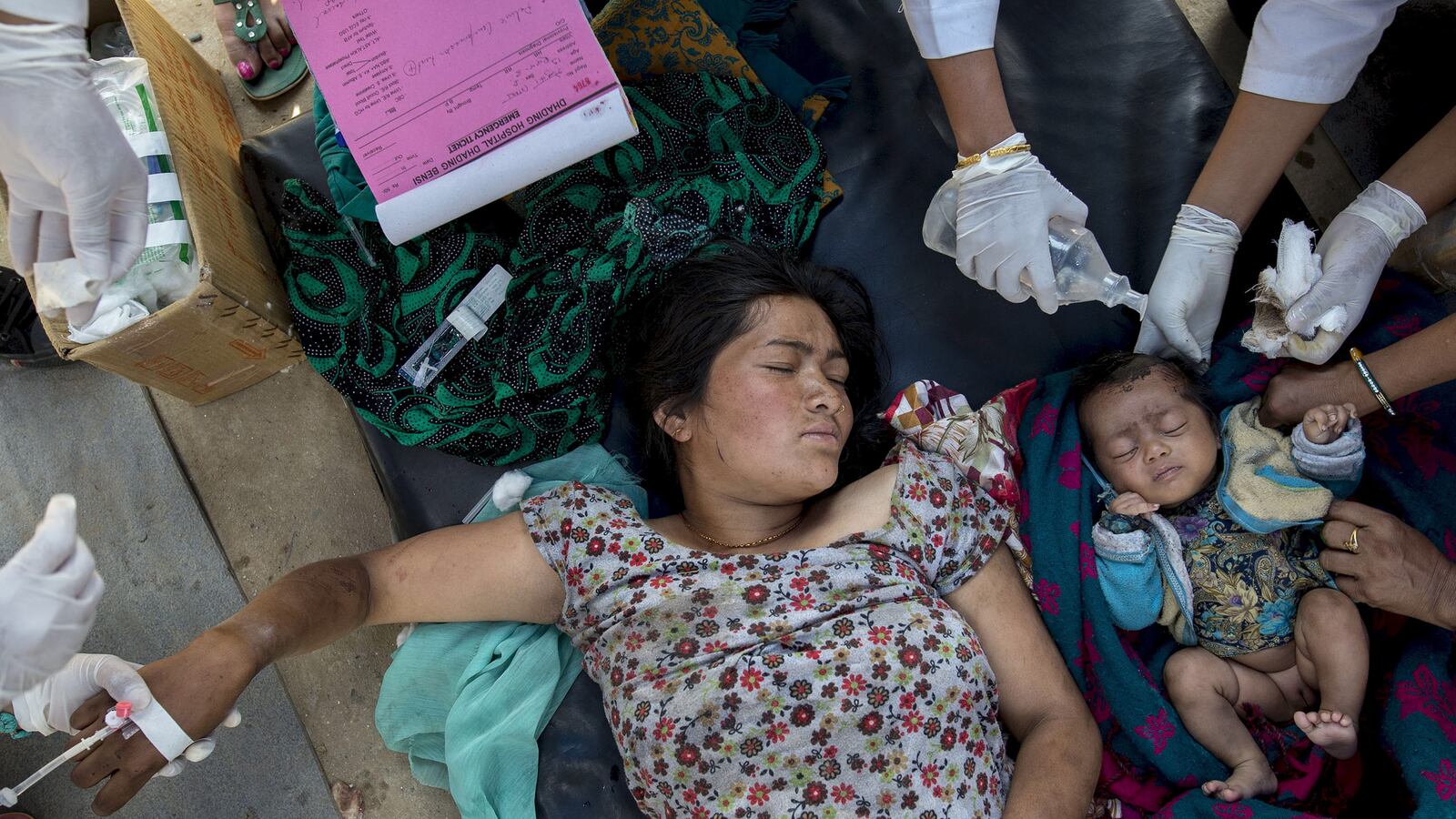KATHMANDU, Nepal — Fear. It is the overwhelming emotion in Kathmandu. Most of the capital city moved outdoors at night after Saturday’s big quake, and most people are still there, occupying every empty space, not just the sprawling army fields and Ratna Park and Tundhikhel in Central Kathmandu. They curl up on three-foot-wide sidewalks along the city's main roads, sometimes on the roads themselves, lying on carpets, wrapped in blankets and with any type of plastic to protect them from the daily downpours. This remains a city on edge and a city in shock.
A recent report predicting that the "Big One" still had to happen and that Nepal would face even greater devastation spread the sense of doom and panic even further. This is not what Nepalis needed to hear. Scientists can give probabilities but that is just what they are. They are not inevitable facts.
Geological forecasts are a complex science. In lay terms, the scenario for Nepal needs to be put in percentages based on past earthquakes. The seismic version of a weather forecast is the U.S. Geological Survey +"Aftershock Forecast" (PDF) for the 7.8 earthquake that hit Nepal around noon on Saturday April 25.
Earthquakes don't just disappear. They tend to linger in different forms for weeks and months if not longer. In fact seismic experts believe that an earthquake without immediate and frequent aftershocks is bad news. The statistics aren't very specific and give a wide range.
Many of us in Kathmandu are counting the aftershocks as a way of making ourselves feel better and less afraid. In the coming weeks, the USGS expects 3 to 14 aftershocks around a level 5. It's good to know that we have had three already. In this long week we now face, there is a 54 percent chance of a level 6 or above and a 7 percent chance of a level 7. The aftershocks at level 3 or 4 will continue for weeks and months. In other words, Nepal is in it for the long haul.
The reality on the ground right now is very grim regardless.
In the Kathmandu Valley several hundred thousand people are living outdoors and many of their houses or businesses have collapsed or are probably uninhabitable. Central Kathmandu, the oldest, most crowded part of town suffered the highest casualties. Drive along any street and it is possible to see deep jagged cracks winding up apartment high-rises, hospitals and residential housing. Daily torrential rains mean misery complicated but daily aftershocks.
There is a critical need for tents, tarps, food, and most importantly water. On a good wet-season day, pre-earthquake, the city had to import 40 percent of its water from outside the valley. The earthquake has most likely damaged the traditional underground water system and the lack of electricity means those with bore holes don't have the power to pump water out of them. Already the shops that are open have sold out of bottled water. Much of this urban center has no running water in its taps.
People need fuel, especially for their motorcycles, the most common form of transportation here, so that they can reach their families, search for shelter and food. But every drop of fuel as well as cooking propane comes up by road from India, a process that in normal years often means months of shortages and waiting on petrol lines for an entire day if necessary.
And this disaster is not just about a city, it is about almost half a country.
The situation outside the valley is dire. Nepal is a land of steep mountains sliced by sheer ravines, narrow dirt roads snaking around precipices that are frequently blocked by landslides and dangerous dirt airstrips where only very small aircraft can land. Some areas are cut off from the rest of the country during the winter months or during the wet monsoon summers.
Initial reports from the hardest hit area near the epicenter are of flattened villages where farmers have had to walk eight hours to a place where they can get cellular signal to call for help.
A massive international effort is being mounted to get help out there but it is a much slower and more complex process than in the Kathmandu Valley. The Indian air force has been flying in C-130 cargo flights in the middle of the night loaded with medicines and it brought in big MI-17 helicopters that, with the help of Nepali choppers, will try to gage the vastness of needs. Poland has flown in search and rescue dogs to try to sniff out survivors in the rubble. The U.N. is bringing in emergency relief supplies and NGOs are beginning to mount a huge aid campaign.
Past massive international relief efforts have proven that uncoordinated world generosity can easily backfire. Often what happens is that huge numbers of well meaning skilled individuals who are completely uncoordinated among each other and with the government, and who don't know the country, typically need a lot of logistical and material support. They can end up being part of the problem as just another issue that the government has to manage.
Photos: The Devastating Aftermath in Nepal

The remoteness of Nepal's hinterlands and to some extent of the country itself complicates the rescue effort. Al though Haiti, like Nepal, is desperately poor, its post-earthquake relief operations in 2010 was aided by its proximity to sea and to the United States. Nepal's infrastructure is outdated and weak and the only ways in are via a couple of narrow roads from India or by plane.
On Day 3, Nepal's only international airport in Kathmandu was almost paralyzed by the chaos in the air and on the tarmac. With only one runway, aid flights were parking on taxiways where even Nepal's first-ever cargo 747 came in with 400 tons of medicines. International flights circled for hours before landing or being diverted to India or Bangladesh. Thai Airways had the worst luck having tried twice to get to Kathmandu and only to be diverted both times. Qatar airways managed to land but then had to keep its passengers on board for three hours before being allowed to park. It took passengers as long as five hours from landing to the exit.
Once aid is out of the airport, the next step will be getting it into the mountains. Many more helicopters will be needed. For those buried under their houses, hope is fading very fast. For those who survived, most of them subsistence farmers, much of their food is buried under their home along with their cooking utensils. Hunger will creep up soon.
There is plenty to worry about in Nepal today without hypothesizing about future quakes. This one was quite big enough.






